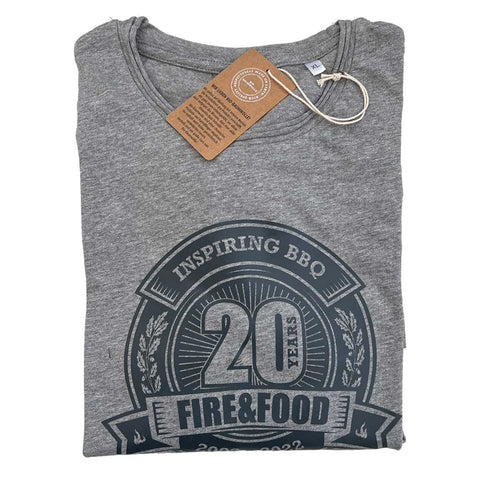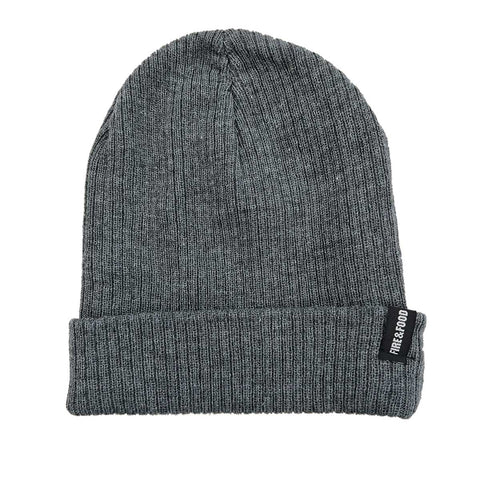The Wild Sheep of Ireland
BACK TO THE ROOTS: SHEEP FARMING IN IRELAND The heyday of Irish sheep farming was in the 1980s - associated with negative impacts on the environment through overgrazing. But the Irish government initiated a structural change and brought international corporations and banks into the country, which led to enormous economic growth - until the big crash and the outbreak of the financial crisis. The small country was shaken to its core and Ireland's oldest economic sector, agriculture, has since experienced a comeback. The green island has learned from its old mistakes and is now also focusing on a green image in ecological terms. FIRE&FOOD takes a closer look at the lives of the lambs.
Ireland is the most western European country and its climate is determined by the Atlantic and a moderate influence from the Gulf Stream. This mixture is responsible for heavy rainfall - but also for the most vigorous grass growth in Europe. This is evident in the green pastures that form the pillars of Irish agriculture and enable rich ecosystems to develop in the plains, but also in the small and medium mountain areas.
and to maintain a traditional agricultural life without modern interventions. The landscape in Ireland is characterized by a patchwork of green fields that are fertile most of the year. A paradise for the approximately three and a half million sheep - but also a lot of work for the approximately 33,000 breeders. All farms operate as family businesses with an average flock of just over 105 animals. The main breeding area in Ireland is in the middle of the country, a relatively flat landscape, also called the "Lowlands", which lies on the largest contiguous area of limestone in Europe. The high calcium content makes it perfect for grazing. The Suffolk and Texel breeds are now primarily native to the Lowlands, while the more traditional breeds such as Blackface, Belclare and Cheviot (white-headed) are mainly found in the Highlands, the hills and mountains. FIRE&FOOD went in search of clues and visited two sheep farmers, each of whom is considered typical of a Low and a Highland farm.
Typical picture of a hedgerow management with sheep.
THE LOWLANDS
In the Lowlands, more precisely in Tyrellspass in County Westmeath, Yvonne and Gordon live with their 550 breeding sheep on their Johnstown's Farm, which they are the second generation to run. It is a sheep farm whose processes are typical of many farms in the Lowlands. The couple cross Texel sheep, which are known for their excellent meat quality, with Lleyn, a breed that comes from the west coast of Wales and whose strong maternal instinct is good for later rearing of the lambs. The resulting ewes are crossed with Vendéen fathers, a breed that also has excellent meat quality and very flavorful meat from the region of the same name in France. In October, the mating season begins for Yvonne and Gordon's sheep, and the animals stay outside in the pastures during these weeks until late December or early January. As soon as the ewes are pregnant, they live in small groups in the barn and are fed barley straw and grain. The gestation period lasts 21 weeks, so the first lambs are born in March. 24 hours after birth, they are allowed out to pasture with their mothers, but first they get their ear tag, as Yvonne explains. The marking of the sheep to identify them is required by law, but she and Gordon use an electronic system with which they also document all events from birth to the animal being slaughtered or sold. This allows them to monitor and evaluate their breeding success and, if necessary, take measures to improve it. In June, at 12 to 14 weeks of age, the lambs are weaned from their mother's milk. From this time on, the lambs are ready for slaughter, but Yvonne tells us that most of them are sold in September and October. And then it all starts again...
THE HIGHLANDS – Rugged land, tender meat
Connemara, in the westernmost tip of Ireland, is considered a wild beauty and mythical region and has a turbulent past as a refuge for smugglers and pirates. Wildly rugged land meets steep cliffs and long sandy beaches. Colorful heaths in the soft peat bogs and a kind of lunar landscape of porous limestone characterize the home of the Blackface breed of sheep, which have the EU quality mark "PGI" (protected geographical indication), known as "Connemara Mountain Lamb" and are popular with gourmets. We are guests of sheep farmer Bernard King in Leenaun in County Galway. He runs the "Connemara Mountain Lamb Farm" together with his wife Allison in the third generation. His farm is right by the sea and there is a fantastic view over Killary, Ireland's only fjord. The associated land covers around 530 hectares and is part of the Maumturk mountain range; some of the pastures are 500 meters above sea level. What sounds romantic to us is associated with a lot of effort and expense for Bernard and is one of the reasons why the yield per animal of his breeding is lower than, for example, that of Yvonne and Gordon in County Westmeath. His farm has been awarded the Irish and EU organic seal, partly because his land can only be farmed extensively by nature. Some pastures are so difficult to reach that helicopters are used to round up the animals or to fence in pastures. In return, the sheep can roam freely across vast areas in search of lush meadows and fresh herbs and "thank you" for this by acting as landscape managers. They prevent the landscape from becoming overgrown and cause less footfall on the vegetation scar than cattle. But the mountain sheep here not only grow more slowly and in a different seasonal rhythm than their cousins in the Lowlands, they also have a naturally slimmer build. This means that they do not reach the weight of around 20 kilograms desired by the meat industry, but reach a maximum of 16 kilograms. The lambing season begins in May and lasts until the end of August, after which the lambs graze in the mountains until November and only descend to the plains for the winter. In this way, Bernard produces around 500 lambs every year in December. In order to sell them, he has to find many smaller buyers such as restaurants, butchers, delicatessens or food retailers.
AIR DRIED LAMB – Every leg of lamb is a work of art
From Leenaun we head inland again to the small town of Oughterard, in the heart of Connemara. There we meet master butcher James McGeough, a specialist in meat and sausage delicacies, who produces air-dried lamb ham according to old - or more precisely, German - craft traditions. Before James joined the family butcher's shop in 1990, he spent six years training in Germany, which he completed with a master craftsman's certificate. "My time in Germany was very exciting and an exciting experience for me. I learned completely new ways of dealing with meat - at least from an Irish perspective," James explains. He says he is the only butcher in Ireland with this qualification and he returns to Germany for short periods of time to deepen his knowledge and keep it up to date. After his return to Ireland, he began to make new products from ingredients of Irish origin that had previously been more common on the continent. His "Air Dried Lamb" has caused a sensation among local gourmets as the "Irish answer to Parma ham", and more and more Muslims in the country are also interested in his lamb specialties as a welcome substitute for related pork products. At James, all steps up to the finished product are handmade, as the expert explains: "To make a good ham, you not only need the right craftsmanship, but above all excellent raw materials, i.e. the leg of lamb from a healthy sheep. The aromatic meat is determined by the fresh sea breeze and the many herbs that the sheep has eaten in the wild on its journey through the mountains. The process from the freshly slaughtered leg to the finished ham takes over eight months. First, the legs of lamb are salted by hand in a mixture of sea salt, local herbs, garlic, juniper berries, mint, lemon, orange and cloves. The curing at a constantly regulated temperature and humidity takes a little longer than five weeks. During this time, the legs are massaged and turned every day to ensure that the salt and herb mixture really gets everywhere and is absorbed evenly. The legs then mature on the bone for almost six months in our drying chamber. Before they go on sale, we take samples using horse bone needles to test whether they are really ripe and whether the taste you would expect from our air-dried lamb ham has developed." James recommends enjoying the thinly sliced lamb ham slices - apart from as a rustic snack - with some green salad and a fruity dressing or with apricots or figs.
LAMB RACK with dulse, sea fennel and rosemary honey
Fancy a delicious Irish lamb recipe? Then take a look HERE in our FIRE&FOOD recipe database! Head chef Seamus Commons, who is considered one of the greatest Irish talents in the world of top chefs, has conjured up delicious dishes from his homeland for FIRE&FOOD.





















